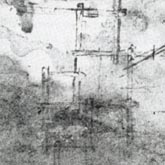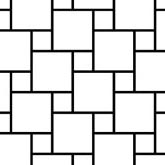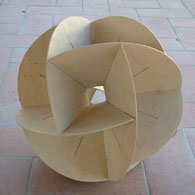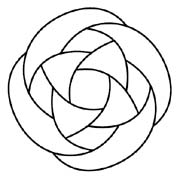Abstract
Leonardo grids is the name I gave to my bar grid construction system with which I was able to construct domes and spheres out of simple elements using one constructing rule. Most of the constructions I made where planar and static.
In this chapter I want to focus on the nonplanar and dynamic possibilities of the Leonardo grids
1. Definition of the bar grid system
The Leonardo grid construction system is a way to make constructions using simple line shaped elements, like rods or beams. The system can be described as follows: on each element we define four connecting points, two at or near the ends and the other two somewhere in the middle at a certain distance from each other. We call these points respectively endpoints and interior points. In this kind of constructions endpoints of one rod may only be connected to midpoints of another rod and vice versa. An example can be seen in Figure 2, a dome structure also represented in the drawing by Leonardo da Vinci in Figure 1 at the left. The drawing of the stucture (Figure 3), which we shall call a Leonardo grid, can be seen as a graph. And this graph has the property that every vertex has degree 3. For the domes the representing graph is always a planar graph. The name Leonardo grid was chosen because his drawings are the only references I found..



Figure 1: Drawing by Leonardo da Vinci
Figure 2: Dome construction
Figure 3: Graph
Also the spheres built with the Leonardo grid construction system can be represented by a planar graph. So in fact the sphere is a 2D object. It is no more than a bent surface. In the example (Figure 4) you can see that the elements don't have to be straight sticks. The four connecting points and the connection rule can be recognized in the model, of which the graph is presented in Figure 5. I found many patterns that can be used as Leonardo grids and all these patterns can be used as basic designs for domes and spheres.



Figure 4: Sphere - 12 elements
Figure 5: Graph
Figure 6: Sphere in sphere